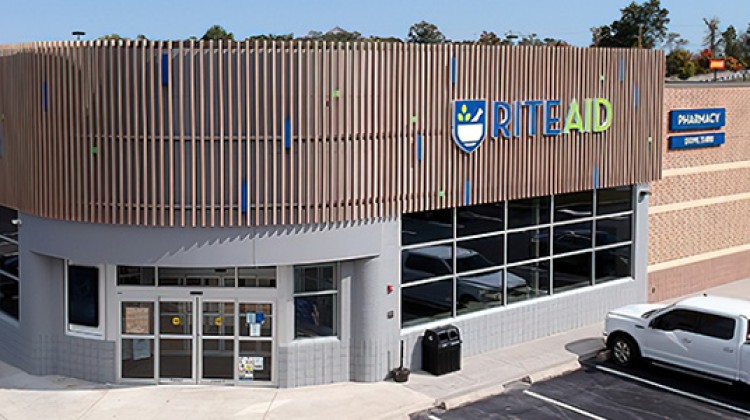Full-year earnings outlook is slightly lowered

PHILADELPHIA — Rite Aid Corp. reported a narrower first-quarter loss than analysts had projected, and beat revenue forecasts.
The company posted an adjusted loss per share loss of 73 cents, which was much better than Wall Street’s estimate of $1.50. Revenue for the period ended June 3 dipped to $5.653 billion from $6.015 billion from a year earlier but topped the $5.324 billion predicted by analysts.

Busy Burr
“Our first quarter results were driven by strong script growth, solid pharmacy margins and early progress with our turnaround program, which offset underperformance on front-end sales in the Retail Pharmacy Segment and a higher-than-expected medical loss ratio at Elixir Insurance,” said Elizabeth “Busy” Burr, interim chief executive officer. “To help mitigate this, we are making targeted reductions to SG&A and capital expenditures over the remainder of the year. Importantly, we made good progress on turnaround initiatives across key areas of the business, and we continue to believe we are on track to achieve Adjusted EBITDA growth in fiscal years 2025 and 2026.”
The company reported a net loss of $306.7 million, or $5.56 per share, an adjusted net loss of $40.1 million, and adjusted EBITDA of $91.7 million, or 1.6 percent of revenues. The net loss widened from last year’s first quarter net loss of $110.2 million, or $2.03 loss per share. The increase was primarily due to a non-cash charge to write down Elixir goodwill, driven by performance in Elixir Insurance’s Individual Part D Plan and the Company’s decision to exit the Individual Part D market beginning in January 2024. Other factors contributing to the higher net loss were higher restructuring-related charges, a lower gain on sale of assets, higher interest expense and a decrease in Adjusted EBITDA. These were partially offset by decreased facility exit and impairment charges.
Revenue slipped largely due to the reduction in the company’s Prescription Drug Plan (PDP) membership and the loss of commercial clients at Elixir. The reduction in revenues was partially offset by an increase in Retail Pharmacy Segment revenues, driven by an increase in pharmacy sales.
Retail Pharmacy Segment
Retail Pharmacy Segment revenues increased 3.4 percent over the prior year quarter, driven by an increase in both acute and maintenance prescriptions, partially offset by a reduction in COVID vaccine and testing revenue as well as store closures. Same-store sales for the first quarter increased 8.4 percent over the prior year period, consisting of a 13.3 percent increase in pharmacy sales, partially offset by a 4.4 percent decrease in front-end sales. Front-end same-store sales, excluding cigarettes and tobacco products, decreased 3.8 percent. The number of prescriptions filled in same stores, adjusted to 30-day equivalents, increased 4.7 percent over the prior year period. Total same-store prescriptions, excluding COVID immunizations and tests, increased 7.4 percent, with same-store maintenance prescriptions increasing 7.6 percent and other same-store acute prescriptions increasing 6.8 percent. Prescription sales accounted for 73.9 percent of total drugstore sales. The total store count at the end of the first quarter was 2,284.
Retail Pharmacy Segment Adjusted EBITDA was $70.0 million, or 1.6 percent of revenues, for the first quarter compared to last year’s first quarter Adjusted EBITDA of $73.7 million, or 1.7 percent of revenues. The decline in Adjusted EBITDA was due to a decrease in Adjusted EBITDA gross profit of $8.4 million, partially offset by decreased Adjusted EBITDA selling, general and administrative (SG&A) expenses of $4.8 million. Gross profit was negatively impacted by the decline in front-end sales, COVID vaccinations and testing and increased shrink expense, partially offset by an increase in prescriptions sold, better-than-expected recovery rates and the impact of generic drug settlements. SG&A expenses benefited from lower occupancy and other operating costs due to store closures and cost control initiatives.
Pharmacy Services Segment
Pharmacy Services Segment revenues were $1.2 billion for the quarter, a decrease of 30.7 percent compared to the prior-year quarter. The decrease in revenues was primarily the result of a decrease in Elixir Individual Part D Insurance membership due to a change in the Company’s pricing structure and loss of commercial clients, partially offset by increased utilization and higher drugs costs.
Pharmacy Services Segment Adjusted EBITDA was $21.7 million, or 1.8 percent of revenues, for the first quarter compared to last year’s first quarter Adjusted EBITDA of $26.4 million, or 1.5 percent of revenues. The decrease in Adjusted EBITDA resulted from the lower membership, as mentioned above and an increase in the medical loss ratio at Elixir Insurance, partially offset by improved procurement economics and reductions in SG&A expense.
Outlook for Fiscal 2024
Based on recent business trends, Rite Aid is reducing total company-adjusted EBITDA guidance by $10 million to be between $330 million and $360 million. Pharmacy Services Segment Adjusted EBITDA expectations are being lowered by $10 million to be between $90 million and $100 million due to higher drug costs and a higher medical loss ratio at Elixir Insurance. Retail Pharmacy Segment Adjusted EBITDA remains unchanged and is expected to be between $240 million and $260 million, which is a result of tougher front-end sales trends balanced with cost savings.
Total revenues are expected to be between $22.6 billion and $23.0 billion in fiscal 2024. Retail Pharmacy Segment revenue is expected to be between $18.0 billion and $18.3 billion, and Pharmacy Services Segment revenue is expected to be between $4.6 billion and $4.7 billion, net of any intercompany revenues to the Retail Pharmacy Segment.
Net loss is expected to be between approximately $650 million and $680 million.
Adjusted net loss per share is expected to be between $4.29 and $4.78.
Capital expenditures are now expected to be approximately $175 million, with a focus on investments in technology, prescription file purchases and distribution center automation.




You must be logged in to post a comment Login